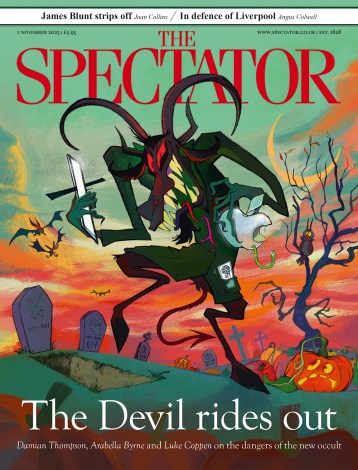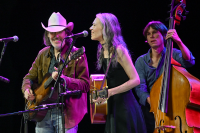The Christian Church sought to banish the ancient gods, but their fascination proved too strong. Their reappearance in their many manifestations during the Renaissance transformed Western visual culture, reviving, nourishing and sustaining the nude and the erotic as legitimate subjects of art.
How the antique gods and demigods descended to earth again, enlivening panels, canvases, furniture, cameos, jewels, medals, ceramics, prints, and as sculptures, is now unfolded in a thought-provoking exhibition of more than 200 pieces at Palazzo Pitti.
The seeds of the revival of ancient mythology were sown in the Middle Ages. Pagan authors were still read as part of the study of Latin, including Ovid, whose Metamorphoses comprised the most extensive single compendium of the lives and loves of the gods. Mediaeval writers and encyclopaedists tended to treat the old gods and heroes as historical figures, and it became fashionable for cities and leading families to trace their genealogies back to these mythical ancestors.
Mediaeval miniaturists also kept alive images of the pagan gods in illuminated manuscripts. During the 15th century, the gods and their escapades began to adorn with increasing frequency cassoni, elaborate chests often forming part of dowries or wedding gifts, painted panels and bedroom furniture. The loves of Zeus/Jove for demigods, nymphs and humans, and the animal and other guises he assumed to have his way with them, were particular favourites: notably the stories of Leda and the Swan, Europa and the Bull and Danae and the Shower of Gold. The representation of these divine acts of coitus may well have had talismanic values associated with fertility and child-bearing. And perhaps in the presence of these symbols every Italian husband could fancy himself a Jove and every wife a goddess or nymph.
Bedrooms and the more private parts of the house and country villas where life was less formal were thought the most appropriate locations for this burgeoning mythological and erotic art. Although it could turn up in unlikely places: Filarete’s bronze doors for St Peter’s in Rome, completed in 1455, include images of Leda and the Swan, and Jove in the form of an eagle carrying skywards the shepherd boy Ganymede. From the late 15th century onwards, artists did not even have to read these Latin stories in the original as a series of translations became available, and in fact the illustrations in these vernacular versions often seem to have been as influential as the texts.
Generally speaking, what was permitted to the gods and their paramours and other denizens of the classical past was forbidden when it came to depicting contemporary humans. The gods could be shown in the act of love while to do the same with ordinary mortals would have been deemed obscene. By the same token, gods and goddesses could be displayed nude — even those who never appeared thus in antiquity — whereas normal humans could not.
The first place seriously to challenge these taboos was Venice. Almost all of Giovanni Bellini’s pictures were religious and devoutly so, yet he painted one of the first independent nudes in post-classical history. It may have acquired the title ‘The Toilet of Venus’, but it is unashamedly a nude study of a comely, well-rounded young woman. Bellini’s pupils Giorgione and Titian consolidated this trend with their autonomous nudes.
Giorgione’s ‘Dresden Venus’ was very possibly commissioned on the occasion of a marriage of one of the patrician Marcello family, which claimed descent from the goddess of beauty, but the artist made little effort to emphasise the classical reference, giving us instead an unapologetic study of a divinely proportioned human being. Similarly, the contemporary domestic setting of Titian’s ‘Venus of Urbino’ (now at the Uffizi) dispenses with the pretence that this is a recreation of antiquity. However, although this lead was taken up by a handful of admirers of the Venetian school north of the Alps, it was to be a long time before most artists were able to abandon at least notional mythological settings for erotic scenes.
The adventures of the gods provided the opportunity to touch upon another otherwise forbidden theme: homosexual love. Prominent here was Jove’s infatuation with Ganymede, which gave rise, among many other images, to one of the great works of homoerotic art, Michelangelo’s 1532 drawing of ‘The Rape of Ganymede’, donated to his protégé Tommaso Cavalieri. The myth of Apollo’s love of the young Spartan Hyacinth was also taken up by artists. And lesbian intimacy was acknowledged and even illustrated in the guise of the tale of Callisto, the loveliest of Diana’s retinue of nymphs, whom Jove seduced by taking on the form of the divine huntress.
The major scandal of the 16th century was provoked in the mid 1520s by the private distribution of the ‘Modi’ (Ways), a series of prints illustrating various sexual positions, engraved by the Bolognese printmaker Marcantonio Raimondi from drawings by Raphael’s star pupil and heir, Giulio Romano, who was to go on to provide explicit frescoes with mythological settings for the Gonzaga in Mantua. Official outrage over the ‘Modi’ was fanned by the fact that they made no attempt to revisit ancient myth, but simply showed, in Vasari’s words, ‘in how many different ways, attitudes and postures disreputable men had intercourse with women’.
Raimondi was imprisoned and Pope Clement VII launched a determined campaign of confiscation and destruction of the offending images. Ironically, one of the few surviving, if fragmentary, copies, on loan from the British Museum, indicates that the work was the result of considerable knowledge of ancient sculpture and friezes, both on the part of the artist and the engraver.
Majolica works, frequently decorated with mythological and allegorical scenes, nude figures and the couplings of the gods with their partners, seem to have been surprisingly immune to censure and censorship. There is plenty of evidence that the master majolica painters were familiar with the ‘Modi’ and borrowed poses from them. And erect male members, rare in painting (one of Giulio Romano’s frescoes at Palazzo Te in Mantua being an unusual exception), are common on majolica, especially when satyrs are depicted who, in the colourful world of majolica, seem to be in an almost permanent state of arousal.
These dishes would typically be brought out on special occasions such as wedding feasts, retaining echoes of ancient Roman fertility rites. On the other hand, they not infrequently have a moralising message, ostensibly denouncing the decadence of the times — Rome and Italy prostituting themselves to foreign invaders, for example — while, like today’s tabloids, taking the opportunity to expose a lot of flesh and the salacious details.
The licence granted to artists to represent the nude, and to imply and depict sexual relations by appealing to ancient mythology, was not revoked even by the Counter-Reformation in the south and Protestant puritanism in the north. A knowledge of the classics and mythology had become the basis for a good education, and even princes of the Church continued to display their learning and sophistication by decorating their palaces and villas with scenes taken from them. Alternatively, the gods could be recruited to represent philosophical concepts, virtues and vices. But, either way, they had become a familiar element of Western culture once more.





Comments